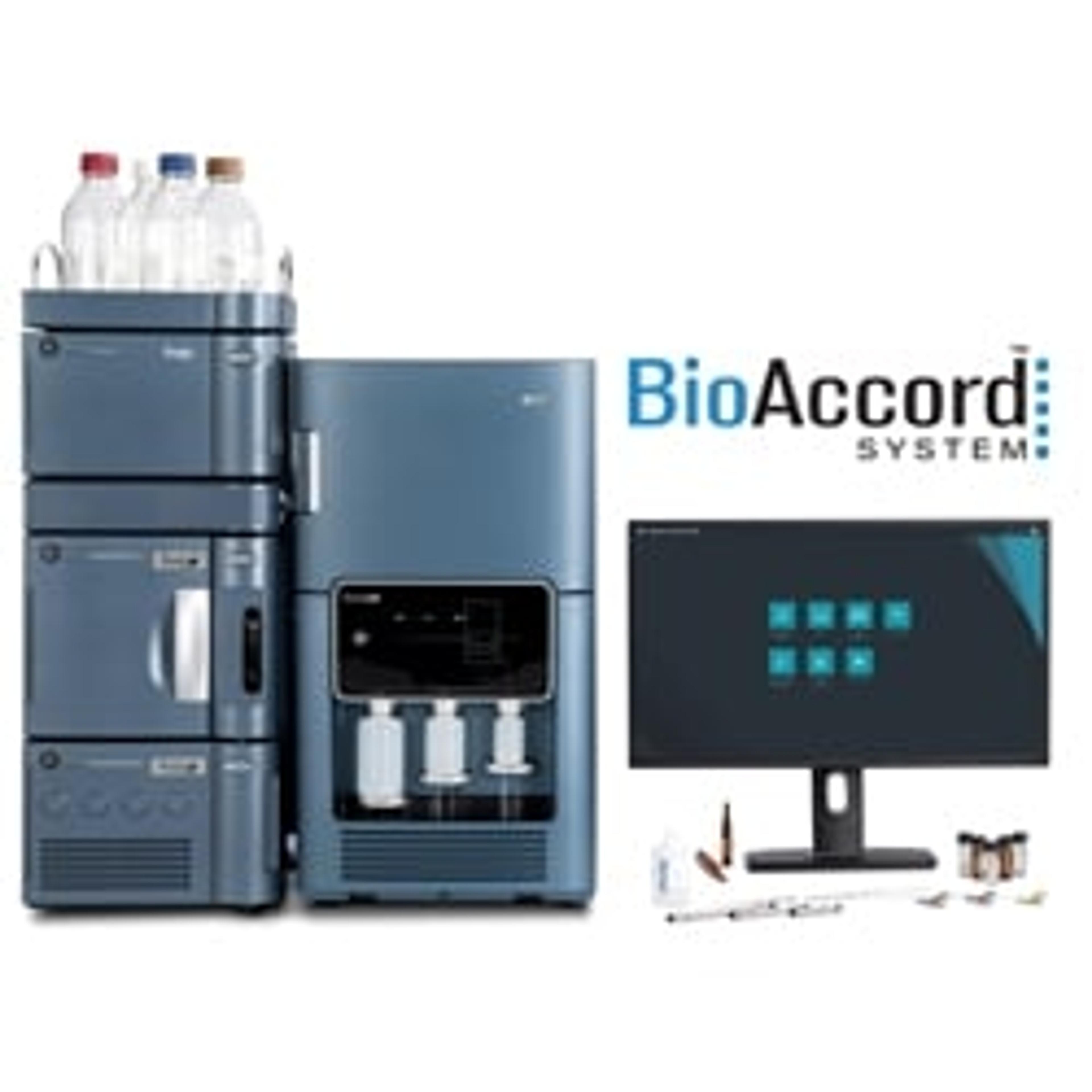Compliance-ready intact mass analysis of modified oligonucleotides and impurities using the BioAccord LC-MS System
Watch this on-demand webinar to learn how the BioAccord LC-MS system delivers robust UPLC separations performance for a range of modified oligos
6 Jan 2021

As the pipeline for oligonucleotide-based therapeutics continues to grow, with over 300 currently in clinical trials, along with an increased demand for GMP/GLP-validated oligonucleotide reagents (including primers, probes, gRNA) for clinical DNA testing and sequencing, the need for robust, compliance-ready LC-MS analysis of oligonucleotides has never been greater.
Waters has designed the BioAccord LC-MS System to deliver robust, reproducible separations and accurate mass performance in a compact, easy-to-use format, one that facilitates deployment across regulated development, manufacturing and QC labs and supports a range of routine biopharmaceutical analyses, including oligonucleotide analysis. In this webinar, hear from Dr. Catalin Doneanu about recent work demonstrating the utility of the BioAccord LC-MS system and find out how this system has helped users analyze and monitor a diverse range of modified oligonucleotides and known impurities using the compliance-ready intact mass analysis workflow.
Find highlights from the live Q&A session below or register to watch the webinar at any time that suits you>>
Watch on demandQ: Why did you choose premier LC columns for the analysis?
CD: We chose this column because it is the recommended column for oligonucleotide analysis and it works well with iron-pairing applications. One of the column types mentioned in this presentation were PREMIER columns, newly introduced this year. These contain an inert surface that prevents interactions between analytes and metals. We recommend using this column although most work was done using the regular oligonucleotide separation technology (OST) column.
Q: Would electrospray ionization (ESI) workflows work for conjugated oligonucleotides used in molecular diagnostic applications?
CD: There was one example showing a conjugated oligonucleotide, which contained a fluorescent amidite tag attached to the 5’-end. I have been running other oligonucleotides, including Alexa Fluor or TT labels and there was no problem. We can run different types of oligonucleotide using this application and obtain good spectra with good mass accuracy.
Q: What is the largest oligonucleotide in terms of size and molecular weight that you've analyzed on the BioAccord platform?
CD: We ran on a 100-mer and we got a beautiful spectrum, with a mass accuracy of around 25ppm. I have run larger oligonucleotides including up to 200-mers. The largest would be 500-mer, in terms of the largest that was able to produce a spectrum.
Q: Are there other optical detectors available for this application?
CD: This application was done with the optical tunable ultraviolet (TUV) detector that goes to 700 nanometers. There are two other detectors, a photodiode-array (PDA) detector that can record the full UV spectrum, going all the way to 800 nanometers in the fluorescence detectors. Potentially, we could use other optical detectors if the compounds warrant such application and if you want to extend the visible range or use it to detect fluorescent molecules. For example, in conjugated oligonucleotides using diagnostic applications.
Q: Were the experimental conditions modified significantly for each class of modified oligonucleotide?
CD: The column and mobile phase were the same, but the gradient conditions were adjusted for each class of compound. It does require some meta-development, since they are closely related structures and we have unmodified versus modified present in the mixture. If the oligonucleotide contains many modifications, then it is relatively easier to perform a separation. Even in cases where we have a single modification, we are still able to resolve the compound using iron-pairing chromatography on this column.
The only thing changed was the gradient profile, so a wide variety of oligonucleotides can be analyzed, regardless of their structure, using the same system with the same column and mobile phase.
Q: What kinds of analyzer could you use for this range of oligonucleotides?
CD: In terms of MS analyzers, we have a Time-of-Flight (TOF) instrument, such as the BioAccord. In this case, we record with full scan MS spectra in negative ion mode over a nucleotide range of 400 to 5,000 m/z. This is perfect for measuring even higher molecular weight oligonucleotides, probably 100-mers or 200-mers.
Q: What precautions did you take for preventing DNA degradation of the sample for sodium adducts?
CD: Sample degradation was not a big problem because these are stable-DNA oligonucleotides. However, I ran RNA oligonucleotides, and these are more liable to degradation and there are always some precautions that you must take. Regarding the adducts, the quality of reagents makes a difference. I was screening and looking at different AGE FIP reagents and that is a major source of sodium adducts from my experiment. The quality of the reagents and cleanliness of the glassware matters. There are always ways to mitigate sodium adducts by ensuring the mobile phase and system is clean with no significant contamination.
Q: Are there ways to modify the mobile phase, perhaps by post-column addition, to reduce the charge state distribution without adversely affecting the chromatography?
CD: What we see mostly with these examples is this bimodal distribution. We have some 0 m/z charge states maximal or maybe -4, -5 and then another distribution peaking around -9 and -10. If you want to deconvolute and get the precise measurement, the BayeSpray deconvolution process helps because you have so much signal spread over the entire mers range. Depending on the application this can be beneficial.
Sometimes you want to reduce the charge state and get less signal. I have not tried that on these types of compounds, but other experiments have been done to show it's possible and you can reduce charge state. Sometimes you may have three or four charge states and can speed up the deconvolution process. I am unsure of the clear advantage of this, maybe if you wanted to do fragmentation and pick certain charge states that fragment better, it could be an option.
Discover how the BioAccord LC-MS system promises to deliver robust UPLC performance for a range of modified oligonucleotides>>

